 African Elephant on Manyara Ranch African Elephant on Manyara Ranch A new scientific study published in the journal Nature Geoscience concluded that the mass extinction of large animals during the Pleistocene epoch caused today’s scarcity of soil nutrients and warned of further soil damage if modern large mammals like the elephant disappear. During the Pleistocene epoch (about 2.6 million to 11,700 years ago, a time period spanning the world's recent glaciations) massive "megafauna" roamed the earth. These megafauna included the giant ground sloth and the glyptodon, a relative of the armadillo that was roughly the size and shape of a Volkswagen Beetle! These megafauna ate much more food and traveled much longer distances than smaller animals. They spread nutrients far and wide via their dung and decomposing bodies, and so were a major factor in long-distance soil fertilization. Pleistocene megafauna extinctions likely resulted from overhunting by humans, climate change, disease, or some combination of these factors. The only continent where these mass extinctions did not occur was Africa, where megafauna co-evolved with modern humans. The loss of megafauna in the Amazon region during the Pleistocene reduced the dispersal of phosphorus away from rivers and floodplains by 98 percent, the researchers estimated.
According to the study's authors, loss of soil fertility will be a catastrophic side-effect of the extinction of today's remaining megafauna, most of which are found in Africa and Asia. Sadly, extinction of many giant animal species is a very real possibility. This is yet another reason why the protection and restoration of mega-herbivores such as African elephants, Maasai giraffes, and black rhinoceros in the Tarangire Ecosystem is so very vital. We thank all of our supporters for aiding us in our efforts to ensure a future not only for giraffes, but the savanna's soil as well!
0 Comments
On our last survey for hoofed mammals in Tarangire National Park in June, we were extremely lucky to catch a quick glimpse of a relatively common but rarely seen wild cat: the caracal (Caracal caracal). This gorgeous feline is closely related to African golden cats and servals, but is quite distinctive-looking thanks to a long tuft of hair at the tip of each ear. Also known as the "desert lynx" (although not considered a lynx species), the caracal is widely distributed across Africa and central and southwest Asia. They eat small mammals such as mice and hyraxes and smaller antelopes like reedbucks, duikers, and steenboks. These cats likely held religious significance for the ancient Egyptians: they were depicted in wall paintings, their bodies were embalmed, and sculptures of caracals guarded tombs.
We saw two adult caracals crossing the road and slinking through the grass. Below is a photo we took of one of the cats (apologies for the poor quality but lighting was less than ideal at 6 AM!) A common sight in the savannas of northern Tanzania's Tarangire Ecosystem is an Acacia tree laden with intricately woven balls of vegetation hanging from its branches like ornaments on a Christmas tree. These amazing nests are made by weaver birds of the family Ploceidae. The colorful seed-eating weaver birds are related to finches, which is evident from their relatively large, conical bills. Given their common name, it is not surprising to learn that weaver birds construct impressive and elaborately woven nests using grasses, twigs, and leaves. Nests can be messy, like those of the buffalo weavers, or tight and neat, like those of the masked weavers. The males typically weave the nests and use them to attract females. Many species of weaver bird are highly gregarious and build their nests in large colonies as protection from predators. This can result in a very large number of nests in a single tree - rather like Christmas trees of the savanna! Watch a short video of Black-headed Weaver males weaving their nests of grasses on an Acacia tree in Tarangire National Park. |
Science News and Updates From the Field from Wild Nature Institute.
All Photos on This Blog are Available as Frame-worthy Prints to Thank Our Generous Donors.
Email Us for Details of this Offer. Archives
July 2024
|
|
Mailing Address:
Wild Nature Institute PO Box 44 Weaverville, NC 28787 Phone: +1 415 763 0348 Email: [email protected] |
|



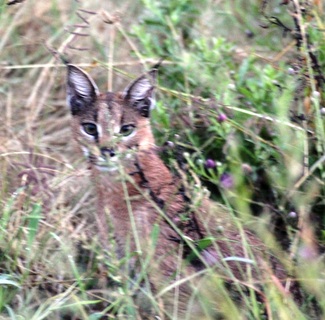
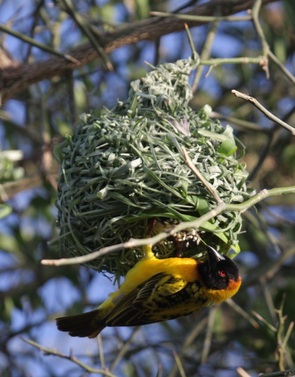

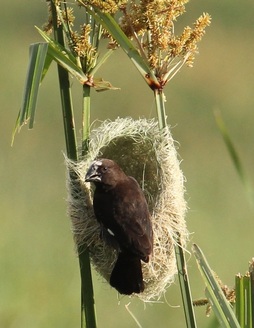

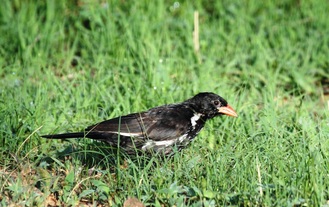


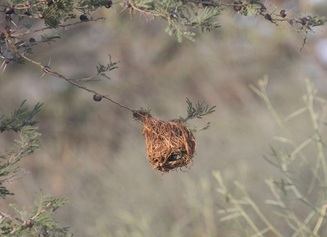
 RSS Feed
RSS Feed
